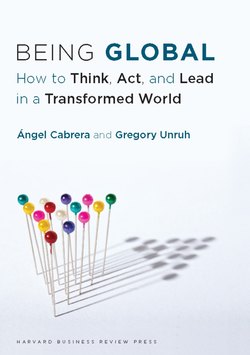Читать книгу Being Global - Gregory Unruh - Страница 13
На сайте Литреса книга снята с продажи.
Why Do We Need Global Leaders?
ОглавлениеThe most promising opportunities and the biggest challenges we face today are inexorably global in nature. Our economy, environment, resources, education, and health systems all connect to, rely on, and affect the economies, environments, resources, and health systems in other countries.
Take a mundane example: there are few items more iconic “American” than a pair of blue jeans. Look closer, however, and a decidedly global picture emerges. The cotton may be picked from Peruvian or Ugandan fields, shipped to China for finishing, and then sent to Malaysia to be spun into yarn. The yarn goes to Thailand where the fabric is woven, then to Singapore to be cut, before it is sent to Indonesia for sewing. Labels come from India. Zippers from Hong Kong. Thread from Malaysia and buttons and rivets from Taiwan.
Blue jeans are pretty low-tech as far as manufactured items go. The range of countries and systems involved in their production nonetheless signals a widely acknowledged fact that business in most industries—apparel, automotive, electronics, processed food, and pharmaceuticals, to name a few—has become relentlessly international. The words “Made in ______” on many product labels simply refer to the last stop on a global journey.2
International trade is not new, of course. Humans have traded and bartered since they became human. The Carthaginians and northern Africans exchanged goods as early as 430 BC.3 Wealthy citizens of the Roman Empire were fond of Chinese silk even before they were aware of China. Yet global trade today is different, largely because it is so pervasive and efficient. Virtually every modern sector and every geographic location has the potential to link to a global market.
Plenty of events and innovations had to happen through the course of history to create the ease and speed of transport and communication necessary for these linkages to occur.4 Today's firms are taking advantage of the enabling environment by investing more heavily in foreign markets, regardless of what, to them, is foreign. Between 1988 and 1997, there were 366 cross-border mergers or acquisitions valued at $1 billion or more; in the following decade, the number of deals more than quadrupled to 1,583.5 Even during a crisis year like 2009, the foreign direct investments made by companies around the world were twice what they were in 1997 and six times what they were in 1989.6
World employment figures tell a similar story: in 1990, multinational corporations employed about 25 million people in foreign subsidiaries—employees working in one country for a company headquartered in another. By 2007, the number exceeded 81 million people.7
As global business connections are increasing in their number and value, the nature of international business is also becoming more inclusive, multidirectional, and interlinked. The approach to global business first modeled in the seventeenth century by the Dutch East India Company (VOC) as a hegemonic enterprise, wholly driven from an American or European headquarters, with Westerners dominating the management positions, is gradually disappearing. Global business in the modern era is truly transnational. Innovations, supply chains, talent, know-how, and capital no longer flow west to east and north to south, while commodities move along opposite currents. Instead, players at all locations along the supply chain are influencing and adding value to the products and services that reach the customer. One of the most compelling details from United Nations data shows that in 2010, nearly half of foreign direct investment came from developing economies and half went to developing countries—a major change since 1989, when developed economies received 84 percent of foreign investment, most of which came from their wealthy peers.8
Today, the world's largest steel company has its origins in India. Another Indian company owns the iconic British auto nameplate Jaguar. The largest building-materials supplier is Mexican. The most sophisticated semiconductor fabrication plants are in Taiwan. The hub of solar energy technology development is in China. Brazil's Embraer is the envy of Boeing and Airbus.
There is plenty of disagreement over the dynamics, modes, benefits, and costs of globalization. Thinkers with wide-ranging views such as New York Times columnist Thomas Friedman, urban studies theorist Richard Florida, historian Robert Kagan, and economists Jagdish Bhagwati, Joseph Stiglitz, and Pankaj Ghemawat have all taken varying positions on the trends, results, and effects of globalization.9 For our purposes, it does not matter which of these thinkers is eventually proven more right than the others. Our interest is not precise measurements of the state or pace of globalization in the present or near future.
Our interest is to help inspire and develop a new generation of leaders who can make globalization better and fairer for all, or who can, in the language of the United Nations Global Compact, create a more sustainable and inclusive global economy. Globalization is the reality that we live in, and we need global leaders who can thrive in this complexity while leveraging its fundamental forces to have a positive impact.
A global world founded on a global marketplace is a hard-won gift given to us by our predecessors. We have the opportunity to create shared prosperity at an unprecedented level. We cannot take this opportunity for granted—it is not predestined or preordained. It can be squandered and lost. Seizing the opportunity depends on this generation of existing and emerging leaders.
